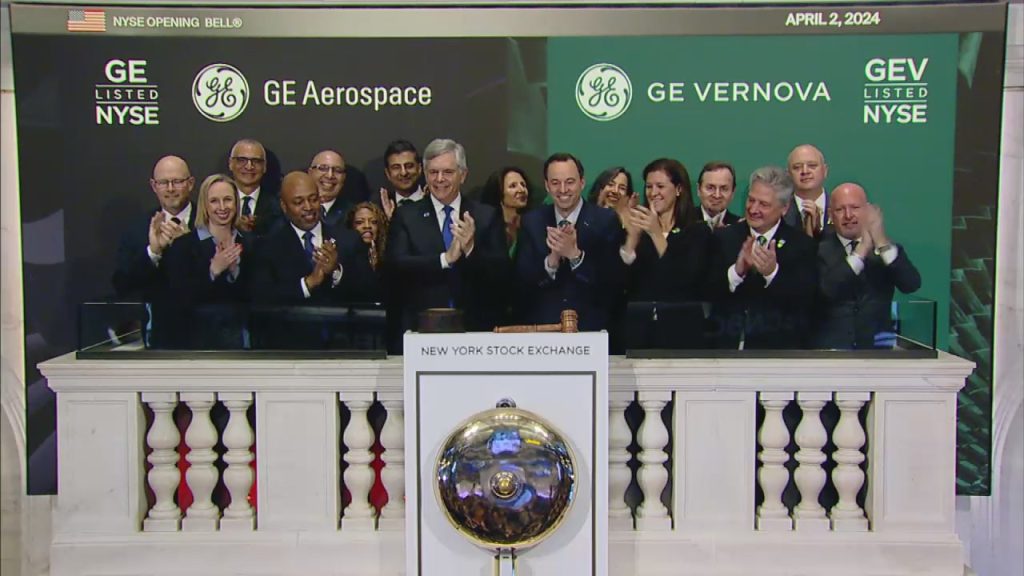GE Aerospace, a division of GE, has commenced operations as an independent public company, following the completion of the GE Vernova spin-off.
The company’s debut on the New York Stock Exchange (NYSE) under the ticker symbol “GE” coincided with a joint opening bell ceremony alongside GE Vernova “GEV” on April 2, 2024. As part of the spin-off agreement, holders of GE common stock were granted one share of GE Vernova common stock for every four shares of GE common stock they owned. This distribution was meticulously designed to comply with tax-efficient principles for GE shareholders in the United States.
Legal counsel for the transaction was provided by Paul Weiss Rifkind Wharton & Garrison LLP, while Evercore, Morgan Stanley, and PJT Partners served as the lead financial advisors. DLA Piper and Gibson Dunn & Crutcher LLP were consulted for additional legal advice, while Citibank, The Consello Group, BNP Paribas, and UBS provided financial guidance.
GE Aerospace Chairman and CEO H. Lawrence Culp Jr., said, “With the successful launch of three independent, public companies now complete – today marks a historic final step in the multi-year transformation of GE. I am tremendously proud of our team, their resilience, and their dedication to achieving this defining moment.”
GE Aerospace’s growth plans moving forward
GE Aerospace enters the market with a substantial installed base, boasting approximately 44,000 commercial engines and 26,000 military and defense engines worldwide. Primarily fueled by the engine aftermarket, the company disclosed adjusted revenue of around $32 billion in 2023, with services contributing 70% to the total revenue.
At its Investor Day conducted last month, GE Aerospace reiterated its 2024 guidance and unveiled a long-term financial outlook, forecasting an operating profit of approximately $10 billion by 2028. Moreover, the company outlined its capital allocation strategy, prioritizing the allocation of funds toward growth and innovation initiatives. Simultaneously, it is also committed to returning approximately 70-75% of available funds to shareholders.
GE Aerospace’s establishment signifies the culmination of GE’s multi-year transformation, which included substantial debt reduction exceeding $100 billion since 2018. The company has also emphasized lean practices and continuous improvement. According to the company, the creation of three independent companies – GE Healthcare, GE Vernova, and now GE Aerospace – signifies a strategic restructuring aimed at unlocking value for shareholders.
“Building on a century of learning and carrying forth GE’s legacy of innovation, GE Aerospace moves forward with a strong balance sheet and greater focus to invent the future of flight, lift people up, and bring them home safely. With FLIGHT DECK, our proprietary lean operating model, as our foundation, I am confident we will realize our full potential in service of our customers, employees, and shareholders,” added Culp.

GE Aerospace soars with 3D printing
GE Aerospace has been a long-time adopter of AM given GE’s 3D printing expertise. Developing and testing its GE9X engines since 2013, GE Aerospace has incorporated extensive 3D printing technology into the process. With 134,300 pounds of thrust, these engines showcase the utilization of additive manufacturing to fabricate parts with complex geometries, a feat unachievable through conventional manufacturing methods.
A few years later in 2019, the company reported each of its GE9X engines feature 300 3D printed parts, forming seven multi-part components. All aimed at reducing the engine’s overall weight, these components include GE’s 3D printed fuel nozzle, temperature sensors, fuel mixers, heat exchangers, separators, and foot-long low-pressure turbine blades
Elsewhere, GE Aerospace unveiled a $650 million investment initiative to expand global manufacturing and supply chain capabilities. This investment will boost production capacity for LEAP engines, used in Airbus A320neo, Boeing 737 MAX, and COMAC C919 aircraft, alongside GE9X engines for Boeing 777X. Of this total, $450 million will be directed towards enhancing 22 facilities in the United States, while $100 million will support international sites. Additionally, $100 million will be allocated to strengthen US-based suppliers, to promote job creation and fortify domestic supply chains.
What 3D printing trends do the industry leaders anticipate this year?
What does the Future of 3D printing hold for the next 10 years?
To stay up to date with the latest 3D printing news, don’t forget to subscribe to the 3D Printing Industry newsletter or follow us on Twitter, or like our page on Facebook.
While you’re here, why not subscribe to our Youtube channel? Featuring discussion, debriefs, video shorts, and webinar replays.
Are you looking for a job in the additive manufacturing industry? Visit 3D Printing Jobs for a selection of roles in the industry.
Featured image shows Larry Culp, CEO of GE Aerospace, and Scott Strazik, CEO of GE Vernova ring the Opening Bell. Photo via GE Aerospace.


